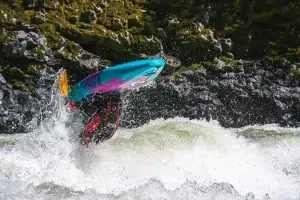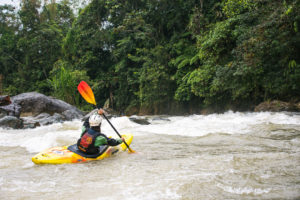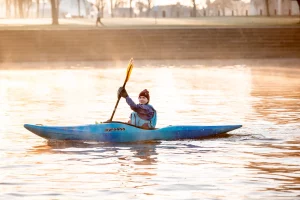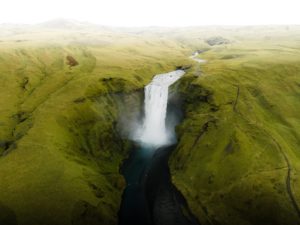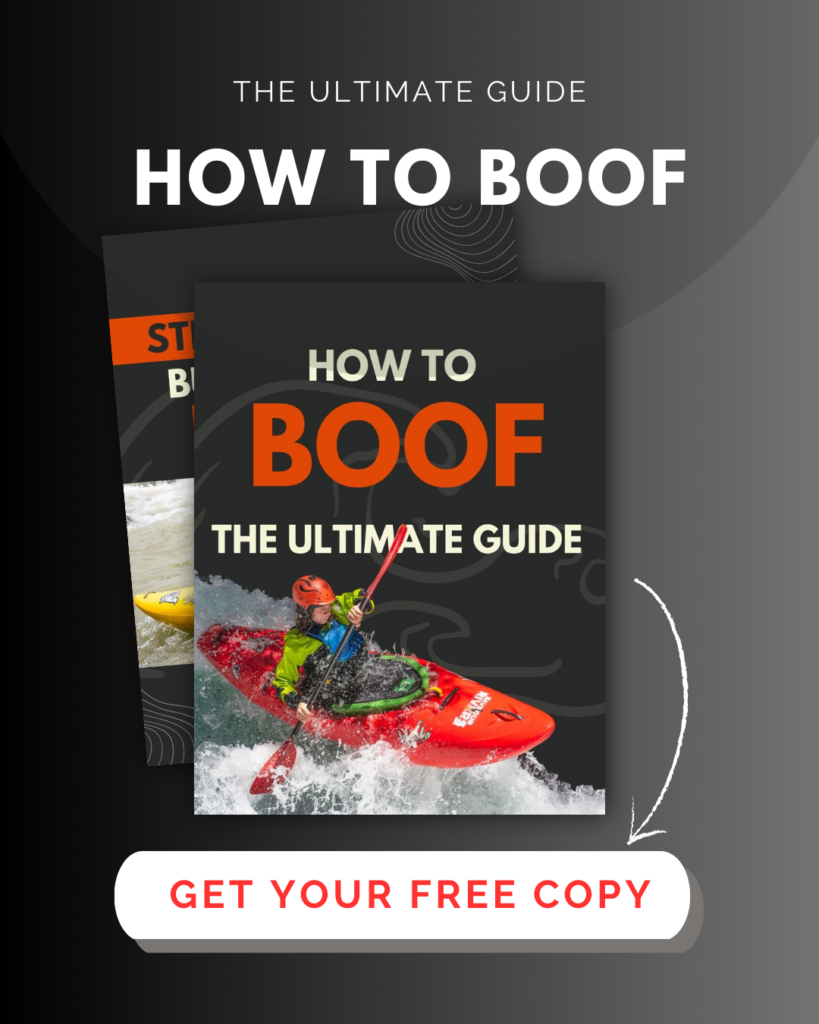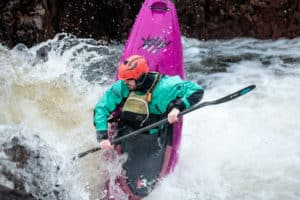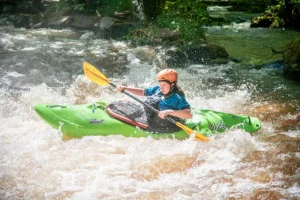Over the past few years, we’ve seen a major shift from creek boats, back to kayaks with a bit of spice.
The Half-Slice!
(And the full slice too)
This opens back up the doors to downriver play.
Getting vertical, throwing freewheels and an all-round good time.
One of the best and most satisfying moves out there is the tailee aka the stern squirt.
The tailee is where you use a seam of an eddy line to bring yourself vertical in your kayak, lying back, looking at the sky and spinning in circles with a massive grin on your face.
This move is fun for all abilities and never gets old.
You can tailee on its own or link it with other ticks and mid-rapid to make things extra spicy.
Here’s how you do it…
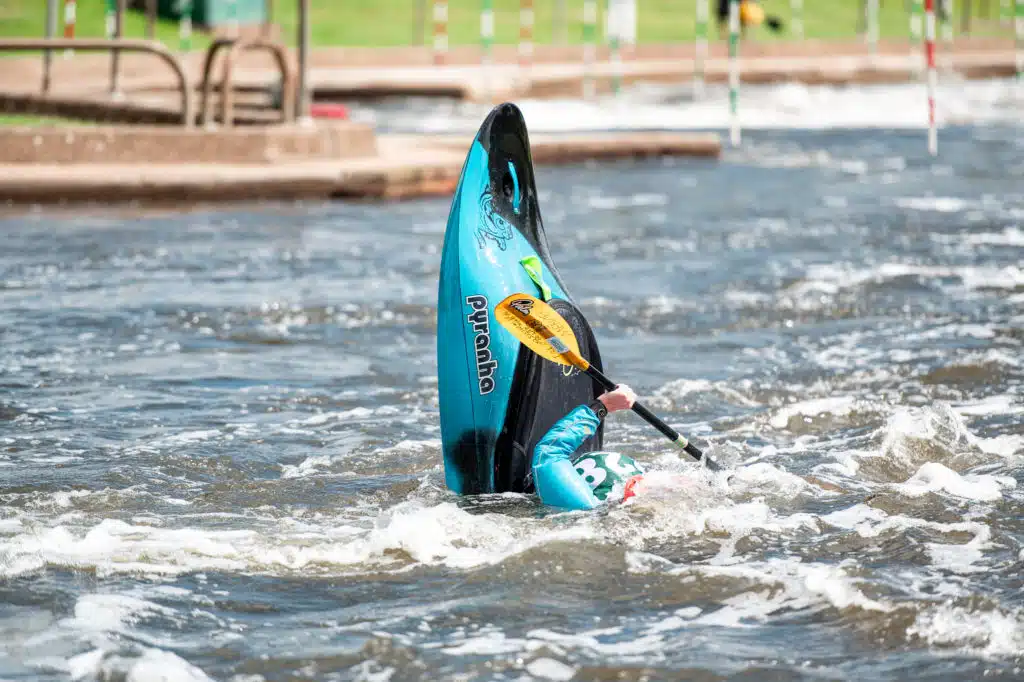
How to master the tailee (aka Stern Squirt)
Step 1.
Find an eddy line.
You don’t need an eddy to get your kayak vertical, but it does help.
The best eddy lines are those with a consistent seam.
When you are learning you don’t want anything too powerful, a calm eddy with a good amount of flow will do just fine.
You will most likely spend a lot of time upside down as you learn this trick, so make sure that there is nothing downstream that can put you off or put you in danger.
Give yourself plenty of space so that you are comfortable pushing yourself.
The other thing you want to watch out for is water depth.
There is nothing worse than going for a stern squirt, hitting a rock and falling on your face while your mates are all bent over laughing at you.
Okay maybe there are a few worse things, but it’s up there…
Ideally, the eddy will be large enough for you to continuously go around in loops.
Personally, I can spend hours in a single eddy if the seam is good enough!
Anyway…
Now you have an eddy to start practicing, what next?
Step 2
We’re going to explain this as if you were coming out of a river right eddy (on your right as you look downstream), but it’s exactly the same on the other side.
You want to set up at the back of the eddy so that you have some time and space to build some momentum.
Paddle to the top of the eddy, where the seam line starts.
Build up a bit of speed, but don’t go charging out of the gate.
Control is the aim of the game.
You want to angle your kayak to between 1-2 o’clock (12 is directly upstream) – as if you were going to ferry glide across the river.
As your bow goes over the eddy line you want to take a small sweep stroke (on your left) to pull your bow more into the flow.
Step 3.
Your bow will now start to be pulled downstream as you cross over the eddy line.
You will feel the water pull your boat as you start to rotate.
When you start to feel this, you want to edge upstream.
You are still mostly in the eddy at this point…
With your core, pull your right hip and knee up and push your left knee and hip down.
You want to slowly apply the edge so that the water loads up over your stern.
Step 4.
Rotate your body to the right, so that you are looking at the stern of your kayak.
As you feel the water load up on the tail, place a reverse sweep stroke on your right.
You don’t want to jerk this as hard as you can.
This is where most people go wrong…
You just want to help the kayak to go vertical as you slice the tail under the water.
As you take this stroke and push the tail of the kayak under the water, you want to exaggerate your edge even more so that the downstream flow has as much surface area to push against, which will pull your boat vertical.
Pull with your knees and keep the pressure on with the stroke to bring yourself up to vertical.
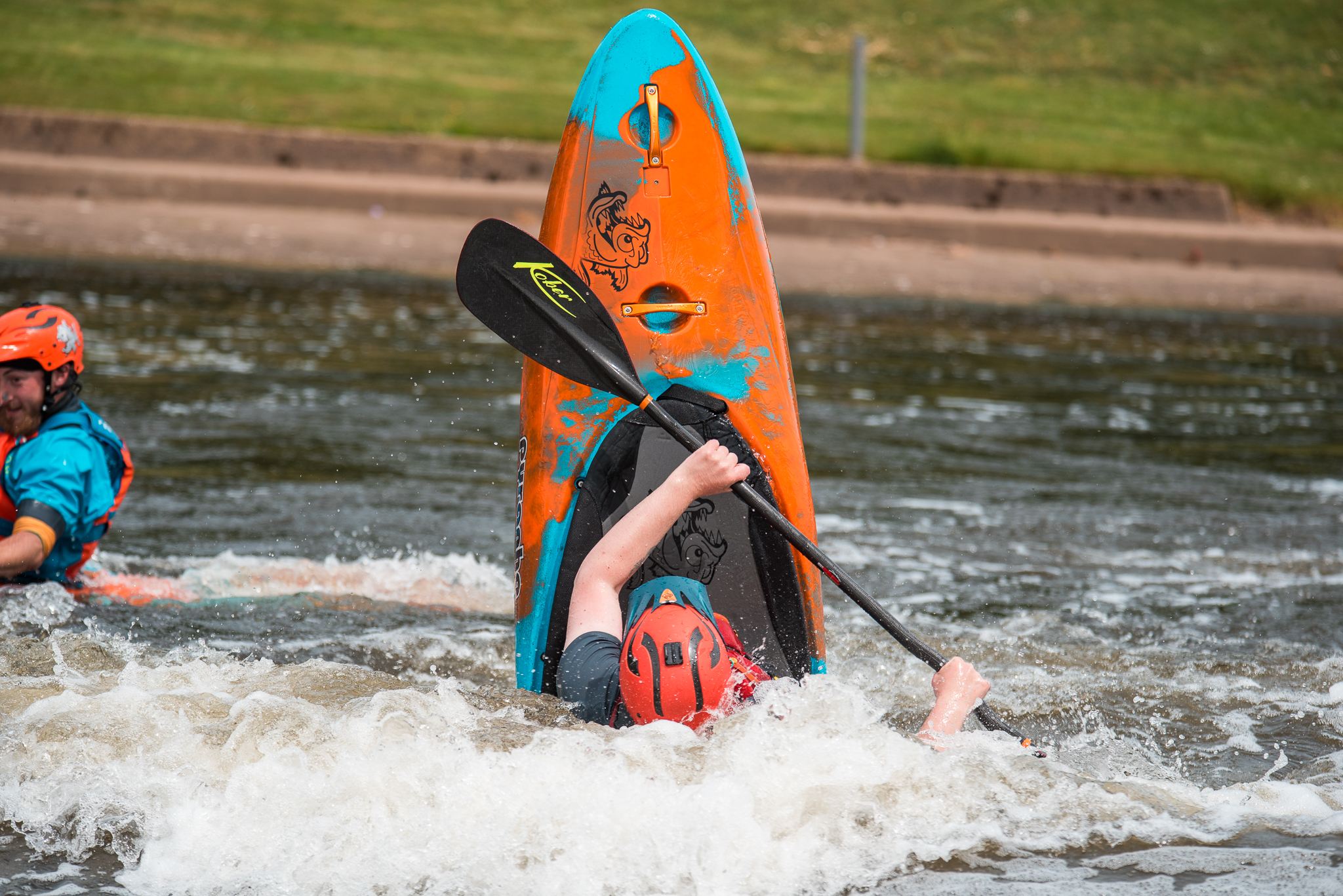
Step 5.
Look and point your shoulders in the direction you want to go.
Your kayak will follow where you look…
Keep looking over your right to stay ahead of your kayaks rotation
To keep the rotation going (and maintain stability) you want to keep taking small strokes with your (right) paddle blade.
The best strokes for this are to pry and pull
As you have placed a reverse sweep (push stroke) to get vertical, your paddle will be in front of your kayak and body.
Rotate the blade and pull the paddle towards your kayak, this will spin your kayak further.
Now draw the paddle blade into your body on its feather so that you don’t take a stroke and then pry the paddle away from you (push the water away) to keep yourself spinning.
Make sure while you are doing this you are keeping the edge maintained and your knees pulled into your chest.
You can keep this set of paddle strokes going so that you continue to rotate your kayak.
Step 6.
Now you want to stay upright!
If you want to go more vertical, pull up with your knees and lean forwards.
If you want to get less vertical, push your feet down and lean back.
Small adjustments will allow you to maintain your balance on the tail of your kayak.
This is one of the most fun tricks and will take time to learn
But there’s nothing more fun than getting vertical with a bunch of other paddlers, chilling out in an eddy halfway down a river.
Keep practicing and share your journey with us, we would love to see it!
Next week, we will break down the common mistakes when it comes to tailees.
See you on the water,
WWKH
P.S. This is pulled from our Newsletter, if you want to have tutorials like this delivered straight to your inbox, sign up here!
P.P.S. If you haven’t already checked out our store, click here. The proceeds go towards keeping this newsletter running! (And we will donate 10% of profits to a river charity)
